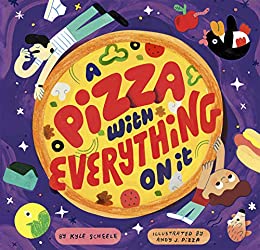Two of my texture paintings are included in the Annual Member Spotlight Art Show at The Phipps Center for the Arts. The show is virtual this year, and here is the video.
Friday, December 17, 2021
Non Traditional Tools for the Art Room
This year marks my seventeenth year of teaching elementary art. It is odd to think I've been in the classroom for that long, but I've picked up a few things along the way and this post shares some of the more unusual items that I use on a regular basis in my art room, and explains what I do with those items. Click the image to be directed to an Amazon Affiliate link to the product!
I use these crab crackers All. The. Time. They will open regular glue bottles, gallon glue bottles, paint containers, glaze jars-anything with ease. I've also seen people use hand held nut crackers, but these are great because the smaller space closer to the hinge is the perfect size for the orange tip of an Elmer's glue bottle for those situations that call for the tip to be removed and cleaned out while the larger space is perfect for larger lids. THIS is my best tip for new art teachers. Don't hurt your hand or waste time soaking the bottle-use one of these!
I also got a few of these half sheet pans with cooling racks. These are awesome for clay! The cooling rack allows for even drying which prevents cracking, and the half size is more manageable for heavier projects such as clay.
When I finish taking down a bulletin board I use this telescopic magnet to double check that I'm not leaving any sharp staples on the floor.
I have a cart like this one for my art displays. On the bottom shelf I have a bin of the phone holders that are listed above for clay plaque projects and a bin of these magnetic hooks for hanging art from the crossbeams of the ceiling. The middle shelf has staplers, staples, thumb tacks, tape, etc. Anything I anticipate needing as I am putting up artwork. One of the bins that hang from the side I use for the staple remover and telescoping magnet listed above, scissors, pen, pencil, and Sharpie. The second one I use to collect used staples. Under the wooden lid I keep an X-acto knife set and any display signs that I think I will want to use again in the future. The lid is nice to put a stack of artwork on so I don't have to bend down to pick up each new work. Sometimes I use a paper sorter like this to hold a larger stack of artwork.
These FIFO (First In, First Out) bottles are amazing for paint distribution. I use a cart similar to the one above and have these bottles in bins on the top shelf with rainbow colors, black, brown, and white. The next shelf has paper plates and/or magazines for palettes, and the bottom shelf has muffin tins that I use with portion cups for more expensive liquids such as glaze or metallic paint (TIP: if you only need six spots, the Dollar Tree has small muffin tins!). I also have a paper towel holder on it with nice, absorbent paper towels just in case.
Kitchen scrapers like the one pictured are very helpful in the art room. I used mine during summer school to get a large sticker off the just-been-waxed floor. They also work on paint, hot glue, and more.
Books for the Elementary Art Room
Like many-dare I say most?-elementary art teachers, I use a lot of children's books in my art classroom. Recently, there have been many posts in different art teacher Facebook groups asking about favorite books for the classroom, prompting me to create a list of books, organized by categories; artists, inspiring, cultural, elements, principles, character traits/SEO, diversity/inclusion, non-fiction, activity/coloring books, and teaching resources. Each row includes a photo of the book cover, title, author, and an Amazon affiliate link. I also have space for the subject/art connection, country/culture and project ideas. I will be adding to this list as I discover new books, and link projects as I create them for the subject and/or artist in the book(s).
While you're here, though, here are a few of my recently discovered children's books.
A Life Made by Hand: The Story of Ruth Asawa by Andrea D'Aquino
I discovered the amazingness of Ruth Asawa last spring, and was thrilled to find a children's book about her life that is approved by her family. I am working on developing a lesson with Asawa's sculptural style.
Art From Her Heart: Folk Artist Clementine Hunter by Kathy Whitehead and Shane W. Evans
Banksy Graffitied Walls and Wasn't Sorry by Fausto Gilberti
This book is actually one of a series of books including Jackson Pollock, Yves Klein, and Yayoi Kusama.
Pizza with Everything on It by Kyle Scheele
Last years my fourth graders made paper mache food and this book would be the perfect compliment to the project. It would open the kids up to thinking about odd things they can add to their artwork and also open up discussion about textures.

















